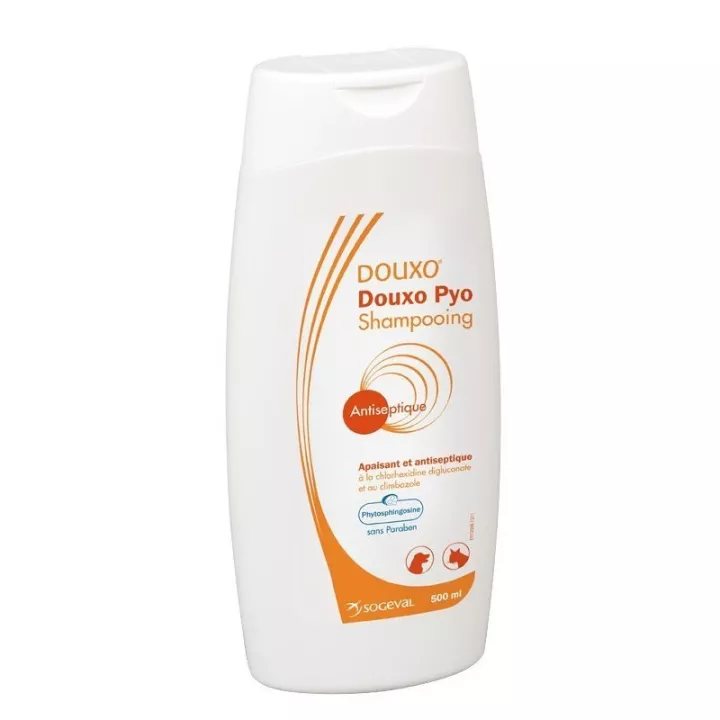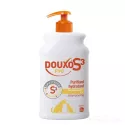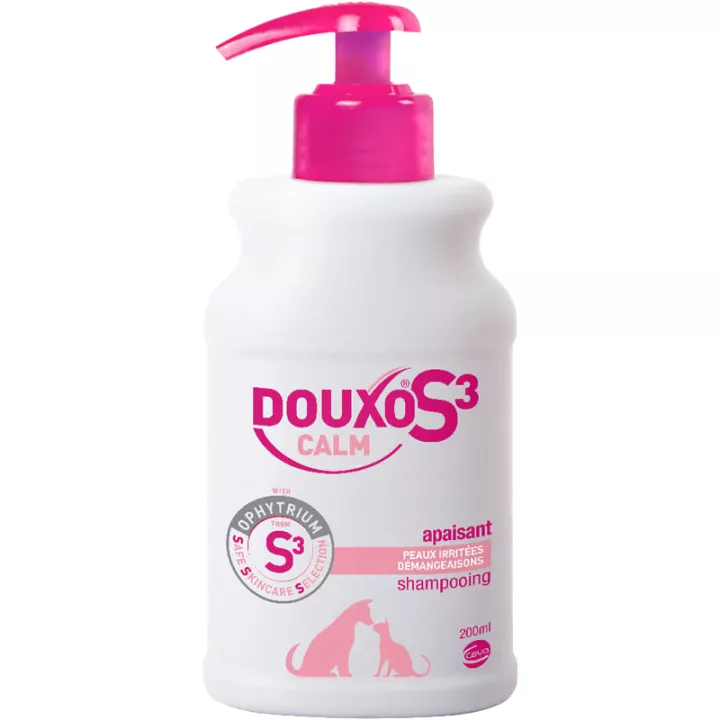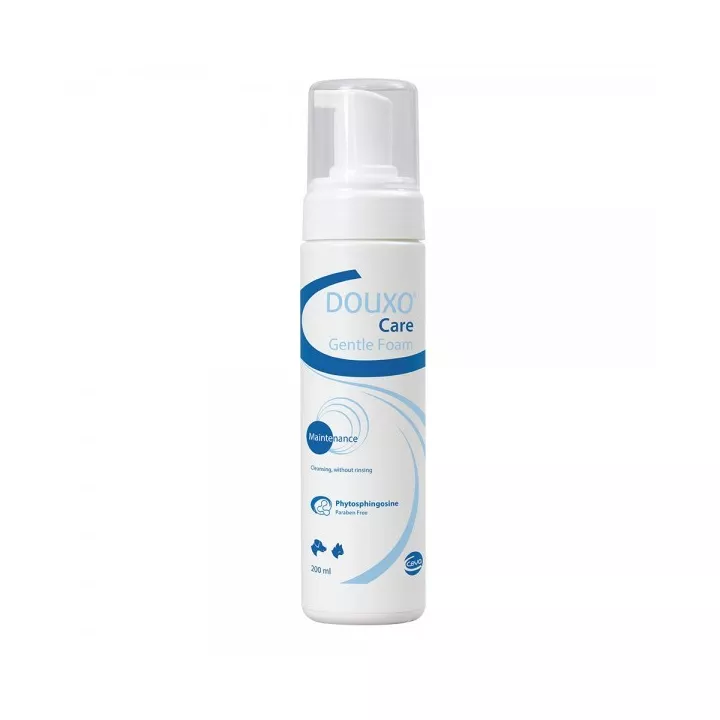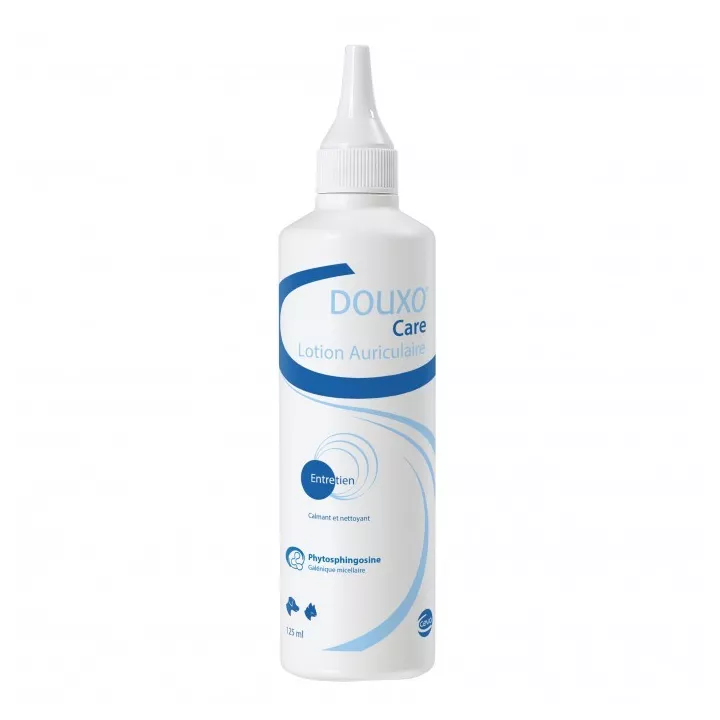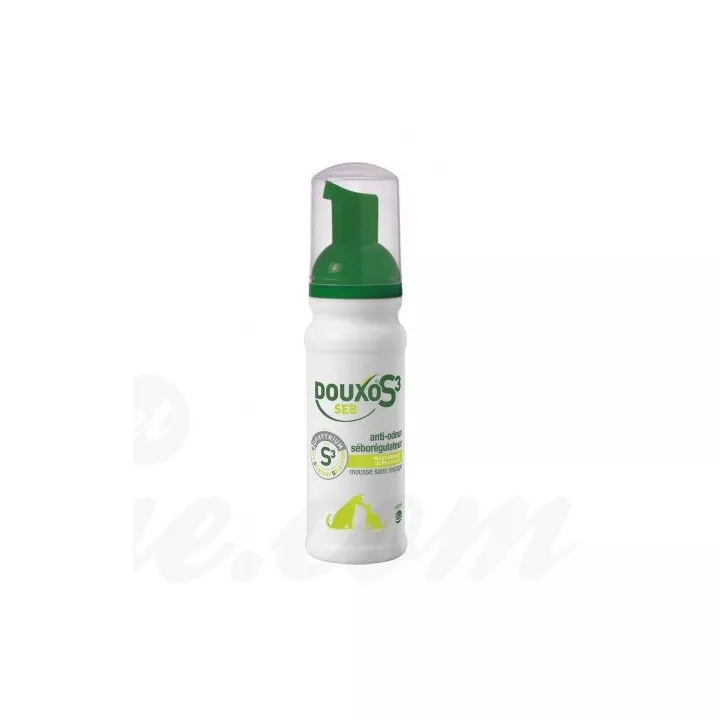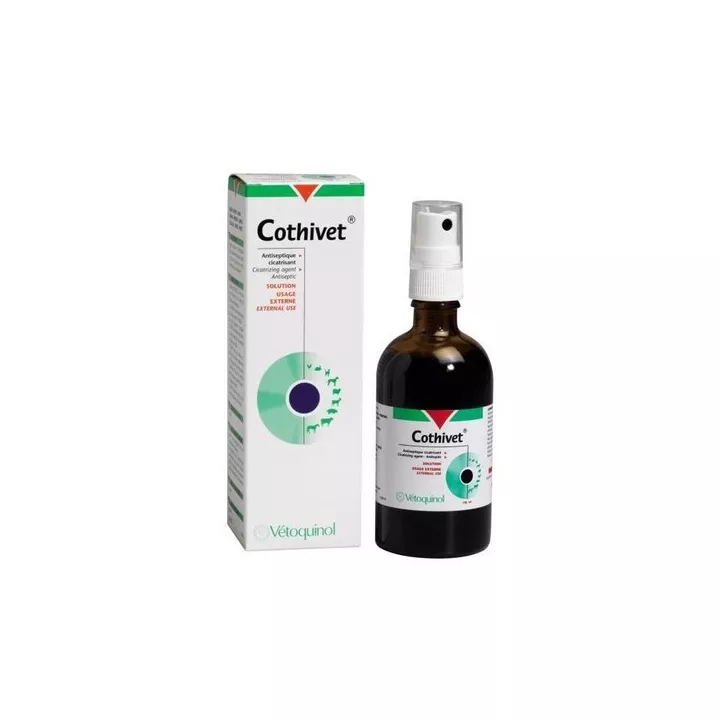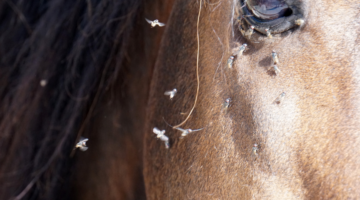What is Douxo Pyo S3 Chlorhexidine 3% Antiseptic Shampoo 500ml used for?
This shampoo helps to: calm pruritus (itching), regulate seborrhea, rebuild and restructure the skin barrier, control the proliferation of flora. Douxo Chlorrhexidine 3% Antiseptic Shampoo 500 ml is a very mild cleanser, compatible with intensive shampoo use. Its pH is perfectly adapted to the skin of domestic carnivores and causes no reactive seborrhea. It deposits a film on the skin's surface that persists after rinsing, avoiding drying and irritating the skin. Its pH of 6.5 is perfectly suited to the skin of domestic carnivores.
The main active ingredient in this antiseptic shampoo is chlorhexidine at a concentration of 3%. Chlorhexidine is a powerful antiseptic that is effective against many types of bacteria and fungi. It is widely used in veterinary medicine for its disinfectant properties.
Douxo Pyo S3 Chlorhexidine 3% Shampoo is specially formulated for in-depth antiseptic action. It helps eliminate pathogens responsible for skin infections, making it an ideal choice for animals prone to skin problems.
Although antiseptic, this shampoo is gentle on your pet's skin. It cleanses thoroughly while preserving the skin's natural balance. It can be used safely on a regular basis without causing excessive drying of the skin. The pH of animal skin is different from that of human skin. This shampoo is formulated with a pH balance specially adapted to animal skin. This ensures effective cleansing without disturbing the skin's natural balance.
Douxo Pyo S3 Chlorhexidine 3% Antiseptic Shampoo 500ml is a wise choice for maintaining your pet's skin health. Its powerful antiseptic formula, gentle action and balanced pH make it a quality skin care product. Regular use of Douxo Pyo S3 Chlorhexidine 3% Antiseptic Shampoo can help prevent skin infections in your pet. It eliminates the bacteria and fungi responsible for skin problems, reducing the risk of infection.
Itchy skin is common in pets and can be very uncomfortable. This shampoo can help relieve itching by removing skin irritants and helping to restore skin health. Skin hygiene is essential for your pet's overall health. By using this antiseptic shampoo, you can keep your pet's skin clean and healthy, contributing to its overall well-being.
Douxo veterinary laboratory also offers S3 Calm anti-pruritus shampoo at the best price in our online pharmacy.
How to use this antiseptic shampoo?
After wetting the animal with lukewarm water, apply Douxo Pyo all over the coat.
- Massage until a light lather forms.
- Leave on for 5 to 10 minutes, then rinse thoroughly.
It may be necessary to repeat this operation immediately.
Give your opinion on the advice for use and dosage of Douxo Pyo S3 chlorhexidine 3% Antiseptic Shampoo 500ml with our partner Verified Reviews after your purchase.
Precautions for use
- Do not swallow.
- Avoid contact with eyes.
What does it contain?
Foaming solution formulated with mild hypo-allergenic washing bases at pH = 7. Phytosphingosine-salicyloyl (0.05%), Lipacide C8G (2.5%), Chlorhexidine (3%).
Presentation
Douxo comes in a 500 ml bottle.
Our advice and expert opinions
The skin is a barrier against external aggression. It's made up of several layers of tightly-packed cells. The phytosphingosine contained in Douxo products is one of the constituents that ensures the cohesion of these cells. When this is lacking, the skin becomes permeable to external elements, and tries to defend itself either by renewing itself more quickly (dry skin and dandruff), or by producing a protective film (oily skin and unpleasant odor). Local administration of phytosphingosine helps restructure the stratum corneum and regulate seborrhea.
Chlorhexidine is a broad-spectrum antiseptic from the bisdiguanide family. It is bactericidal (kills bacteria). It acts on Gram + and, to a lesser extent, Gram - germs. It also has fungicidal activity.

